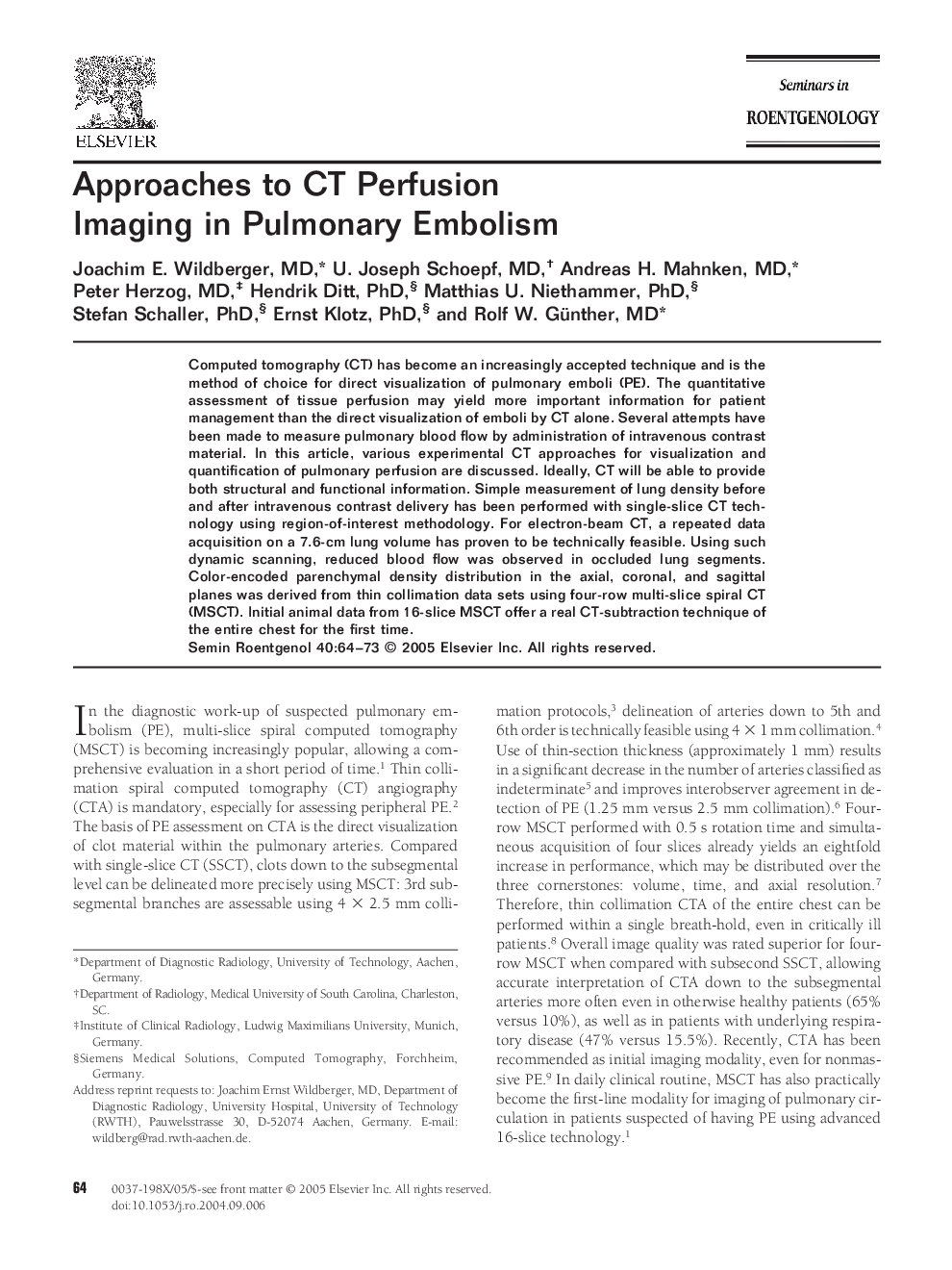| Article ID | Journal | Published Year | Pages | File Type |
|---|---|---|---|---|
| 9088181 | Seminars in Roentgenology | 2005 | 10 Pages |
Abstract
Computed tomography (CT) has become an increasingly accepted technique and is the method of choice for direct visualization of pulmonary emboli (PE). The quantitative assessment of tissue perfusion may yield more important information for patient management than the direct visualization of emboli by CT alone. Several attempts have been made to measure pulmonary blood flow by administration of intravenous contrast material. In this article, various experimental CT approaches for visualization and quantification of pulmonary perfusion are discussed. Ideally, CT will be able to provide both structural and functional information. Simple measurement of lung density before and after intravenous contrast delivery has been performed with single-slice CT technology using region-of-interest methodology. For electron-beam CT, a repeated data acquisition on a 7.6-cm lung volume has proven to be technically feasible. Using such dynamic scanning, reduced blood flow was observed in occluded lung segments. Color-encoded parenchymal density distribution in the axial, coronal, and sagittal planes was derived from thin collimation data sets using four-row multi-slice spiral CT (MSCT). Initial animal data from 16-slice MSCT offer a real CT-subtraction technique of the entire chest for the first time.
Related Topics
Health Sciences
Medicine and Dentistry
Radiology and Imaging
Authors
Joachim E. MD, U. Joseph MD, Andreas H. MD, Peter MD, Hendrik PhD, Matthias U. PhD, Stefan PhD, Ernst PhD, Rolf W. MD,
